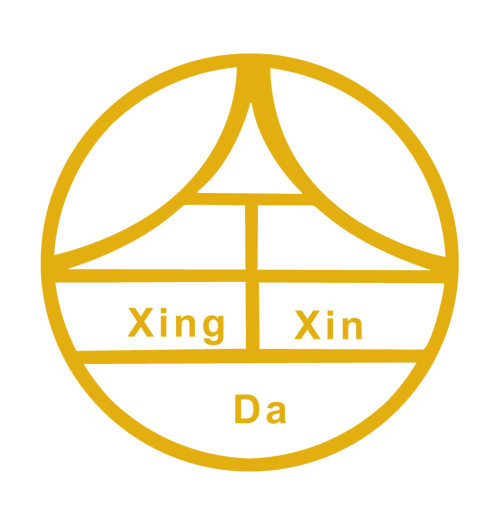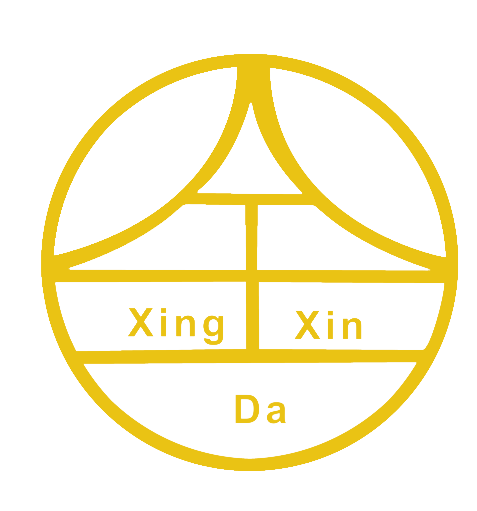The Art of Custom Embroidery: Turning Ideas into Reality
From Concept to Stitched Masterpiece
Custom embroidery creation involves transforming abstract ideas into real designs through careful sketching and planning. When approaching embroidery work, most artists start with an initial concept drawn from various sources ranging from basic hand sketches to intricate digital artwork. The actual process typically moves through several important steps including pattern selection, determination of appropriate stitching techniques, and organization of multiple embroidery layers. Many top designers actually kick off their projects with rough concepts that gradually evolve into detailed embroidered pieces capable of conveying narratives or emotions through fabric and thread combinations.
Getting a handle on color theory really matters when it comes to custom embroidery work. Picking out the right shades affects not just how designs look but also what feelings they stir up in people who see them. Colors have this amazing power to turn something basic like a patch into something eye catching and full of life. Think about sports teams that go all out with bright reds and yellows to show strength and excitement, versus luxury brands opting for muted tones that scream sophistication and class. The colors we choose tell stories without saying a word.
Looking back at design history, countless successful projects started as basic ideas that grew into complex works of art over time. Take Vera Neumann for example her bold color choices and innovative patterns transformed everyday fabric into stunning embroidered pieces that still inspire today. The way these simple notions become elaborate creations shows just how much difference careful planning makes in the world of custom embroidery. When designers put real thought into their work, it often results in something truly special that stands out from mass-produced alternatives.
Endless Possibilities for Creative Expression
There's just so much that can be done with custom embroidery when it comes to expressing creativity. The field covers all sorts of different styles ranging from old school techniques to modern approaches and even those really experimental ones we call avant-garde. From what I've seen, every style gives people a special way to put their personal stamp on things, letting them show off who they are through fabric art. Traditional methods keep alive centuries old skills and cultural traditions, while newer styles bring in today's design sensibilities, making room for wild experimentation and striking visuals. Take avant-garde work for instance – these pieces often break all the rules, with artists creating patterns no one has ever seen before. Some folks actually stitch together concepts from completely unrelated fields, blending science with fashion or mixing technology elements into classic motifs.
Custom embroidery isn't just limited to certain products anymore. People are getting creative with all sorts of stuff these days - clothes, bags, even household items. Think about those personalized patches on baseball caps, fancy embroidered dresses for special occasions, or maybe monogrammed napkins for dinner parties. The possibilities really know no bounds when it comes to adding that personal touch. Companies have caught onto this too. Many small businesses now offer custom patches as part of their branding strategy. A simple patch can turn generic promotional gear into something customers actually want to keep around, creating stronger brand loyalty without breaking the bank on expensive custom designs.
Looking at real world cases shows just how versatile custom embroidery can be across different areas. Take branded merchandise for companies as one example iron on patches and custom t shirts really bring personal touches to products. When businesses team up with famous brands or independent artists, they often create something special that catches people's attention and stands apart from regular stuff in today's market where everyone wants something unique. All these things point to why custom embroidery matters so much for letting people express themselves creatively and show off their individuality through what they wear or use.
Creative Applications of Custom Embroidery
Elevating Fashion: Apparel & Accessories
Embroidery has become really important for fashion these days, adding that special touch to clothes and accessories that just can't be replicated otherwise. A lot of big name brands are now working directly with skilled needle workers to put out limited edition pieces. Take Gucci and their recent work with traditional Indian craftsmen for instance. Streetwear fans love custom patches too, sticking them all over jackets and backpacks as markers of who they are and what they stand for. People want something that stands out from mass produced stuff these days. Looking ahead, we expect to see even more folks wanting custom stitched items on their wardrobe next year. Market research shows demand going up fast as younger generations look for ways to express themselves through what they wear rather than just buying whatever's trendy at the moment.
Home Décor & Personalized Keepsakes
Embroidery has found its place in home decor, bringing a touch of class and personal flair to things we use every day. Think about those throw pillows that look great on the couch, table runners that dress up dinner settings, or even wall hangings that become conversation starters. When people get custom embroidery work done, they're not just buying something pretty; they're creating something meaningful. Many folks have those special items passed down through families, like grandma's monogrammed handkerchief or a quilt stitched with initials from decades ago. We've heard countless stories from customers who treasure these embroidered pieces for years after purchase. Some say they love how each stitch tells a story, while others simply enjoy knowing no one else will ever own exactly what they do.
Techniques That Bring Designs to Life
Hand Embroidery vs. Digital Precision
Embroidery has changed quite a bit over time, with traditional hand stitching standing out against today's digital approaches. When someone does hand embroidery, they create something truly special because every single stitch shows what the maker knows and feels. The fabric gets texture and character that just cant be replicated by machines. On the flip side, digital embroidery brings something different to the table. Modern embroidery machines have come a long way technologically, and they can crank out complex patterns at incredible speeds. Some top models run around 1200 stitches per minute, which cuts down on how long it takes to finish big orders for things like sports team uniforms or fashion collections. What we're seeing now though is this interesting mix of old school and new tech. Crafters are finding ways to let machines handle the bulk work but still leave space for those personal touches by hand. This blend works well for customers who want mass produced items with some handmade flair added in strategic places.
Custom Patches: Iron-On & Hat Embellishments
Custom patches are showing up everywhere nowadays across fashion trends and business branding efforts, coming in all sorts of styles to meet various demands. Take embroidered patches for instance they're those textured colorful ones people love adding to jackets, backpacks, even denim jeans to give them a personalized look. Then there are woven patches which work great when someone wants really detailed designs like company logos or complicated artwork patterns. Printed patches tend to be cheaper options when dealing with complex images that would cost too much through other methods. Iron on patches especially seem to be taking off lately because they stick right onto fabric surfaces without needing any sewing at all just press heat and done. Businesses big and small are jumping on this bandwagon too. Many sports teams now feature custom patches on their gear, and retail stores often put branded patches on employee uniforms or giveaway items during promotions. Hats remain one of the most common places we see corporate branding through patches these days, combining visual appeal with practical marketing benefits for brands looking to stay visible.
Trends Shaping Custom Embroidery in 2024
Sustainable Materials & Eco-Conscious Practices
Sustainable practices are becoming all the rage in the embroidery world these days, especially when it comes to custom work. People want their embroidered stuff to be green too, so lots of shops are switching over to organic threads and recycling old materials wherever possible. Take Ahmed Corp for example. They've really jumped on board with this whole sustainability thing. Their workshops now stock plenty of organic cotton fabric and those special dyes that don't hurt the environment as much. While many companies talk about going green, Ahmed actually walks the walk by making real changes in how they produce their embroidered goods. The push toward eco-friendly embroidery goes beyond just keeping up with what customers want. It genuinely helps cut down on waste and pollution, which matters a lot in an industry known for its environmental footprint problems.
Cultural Fusion & Bold Oversized Motifs
In 2024, we're seeing cultural fusion really take off in the world of embroidery design. Many contemporary artists are mixing elements from different traditions these days. Think about those beautiful Japanese sashiko stitches combined with colors reminiscent of traditional West African fabrics. People around the globe seem genuinely interested in celebrating diverse influences through their embroidered creations. What's also catching attention right now are these massive motif designs that completely transform clothing items into eye-catching statements. Fashion houses showcased plenty of these big scale patterns during recent runway events, showing how embroidery can create striking visuals when scaled up. When talented creators merge authentic cultural references with these oversized patterns, they're not just following trends but actually creating something fresh and exciting for the custom embroidery scene.
Tips for Perfecting Your Custom Embroidery Vision
Collaborating with Professional Designers
Working alongside professional designers really makes a difference when it comes to creating custom embroidery pieces that stand out. Getting clear about what we want from the start helps ensure good results down the line. During our discussions with designers, providing plenty of detail works wonders. Sharing photos or sketches along with specific color preferences goes a long way. Plus, listening to their recommendations based on years of experience opens up possibilities we might never have considered ourselves. Many businesses report that working closely with skilled designers leads to amazing creations because these experts know all the latest techniques and industry trends. Real world examples show how collaborative efforts between clients and designers produce something special nobody could create alone. Effective communication remains essential throughout the process, helping transform initial concepts into finished products that combine fresh ideas with professional execution.
Choosing Fabrics & Caring for Embroidered Creations
The fabric choice makes all the difference when it comes to custom embroidery work because it directly impacts how long the piece lasts and how clear the design stays over time. Cotton, linen, and canvas tend to be favorites among embroiderers due to their firm textures and stable surfaces that hold stitches better than softer materials do. Want something that stands the test of time? Simple care goes a long way. Hand wash gently with mild soap instead of machine washing, definitely skip those high heat dryers that eat away at delicate threads, and air dry whenever possible to keep those intricate details looking sharp. Most seasoned embroiderers will tell anyone willing to listen that going for good quality base fabrics really pays off down the road. With proper fabric selection combined with regular but gentle maintenance, embroidered pieces stay beautiful much longer, maintaining their color vibrancy and structural integrity well into future generations.





